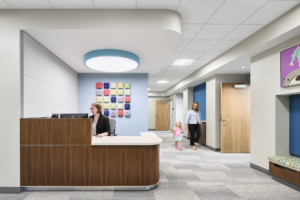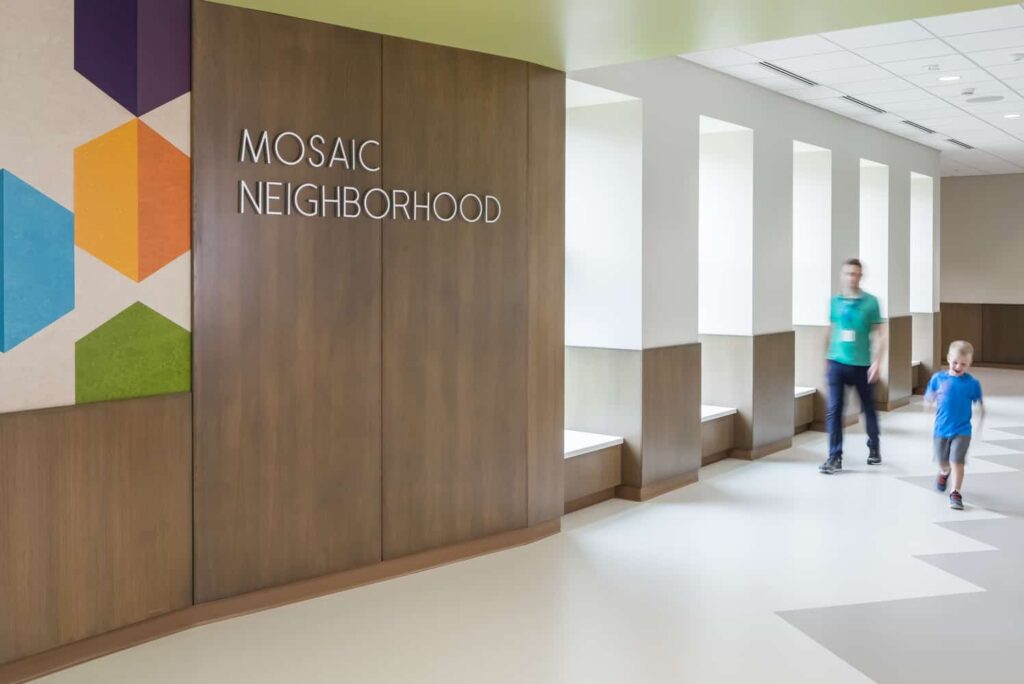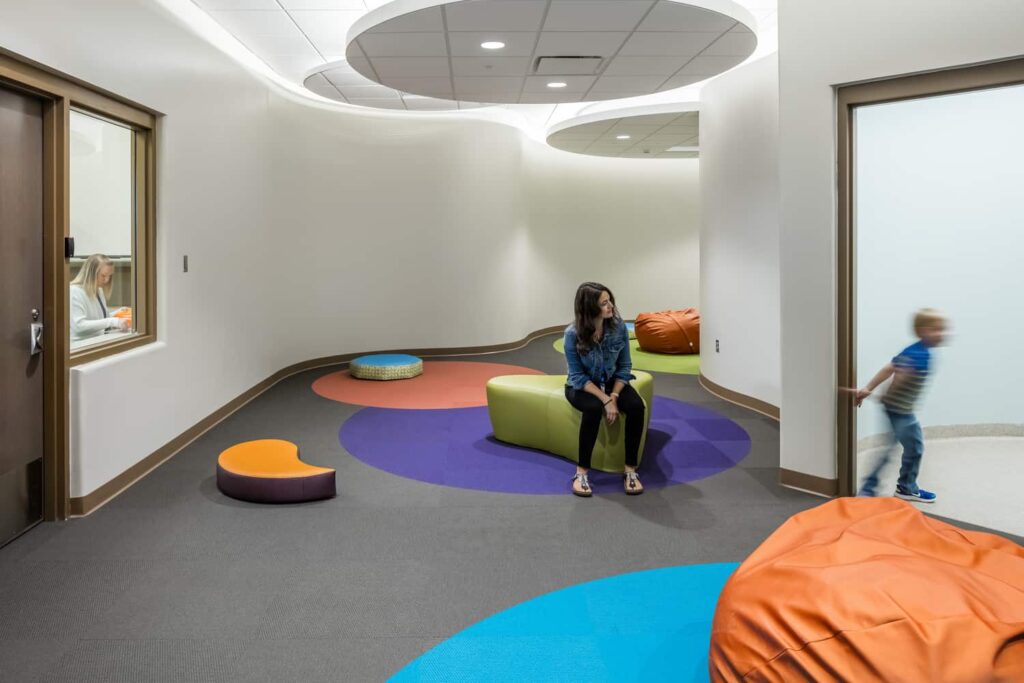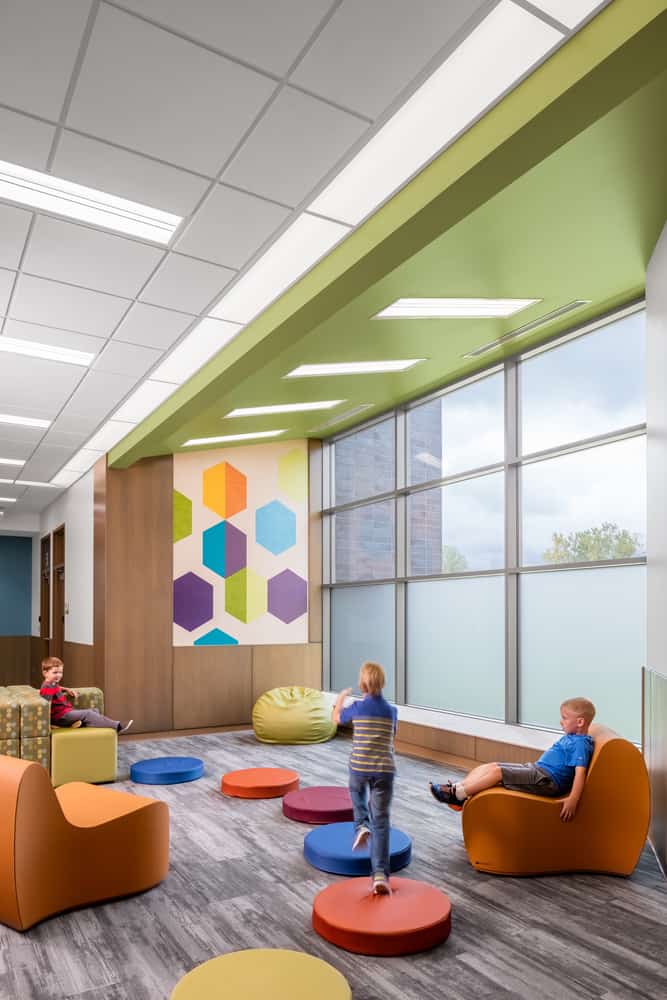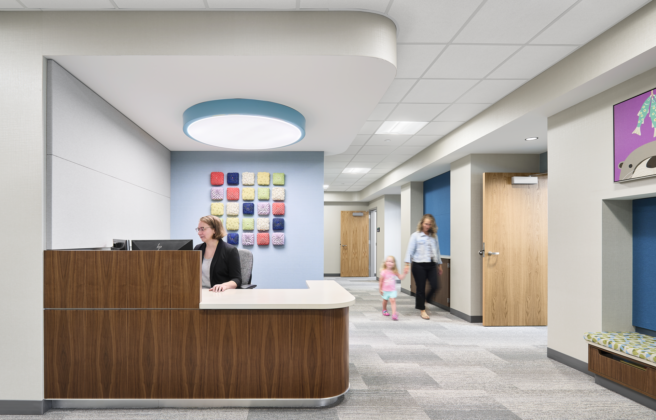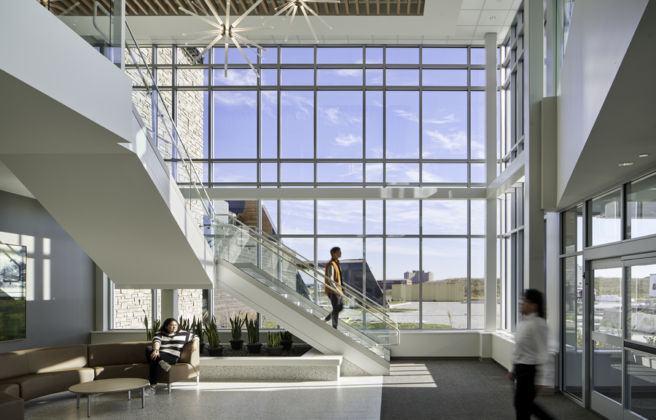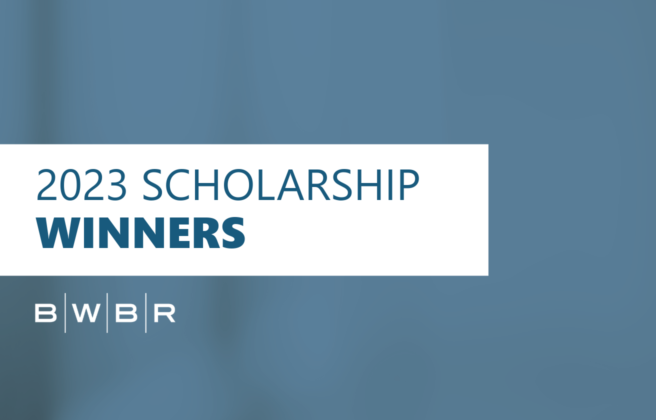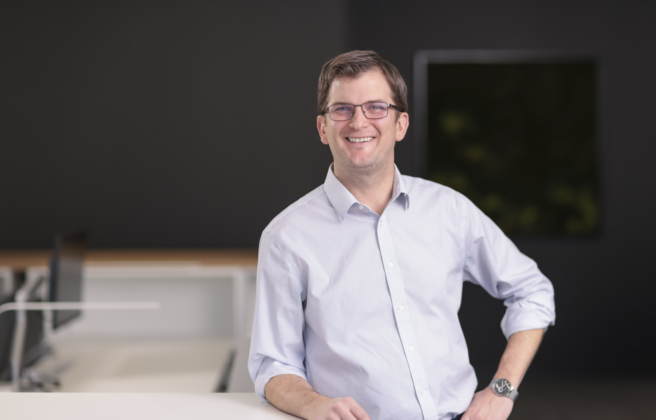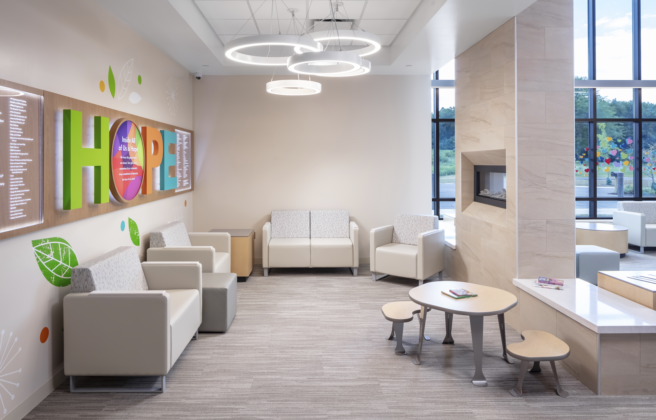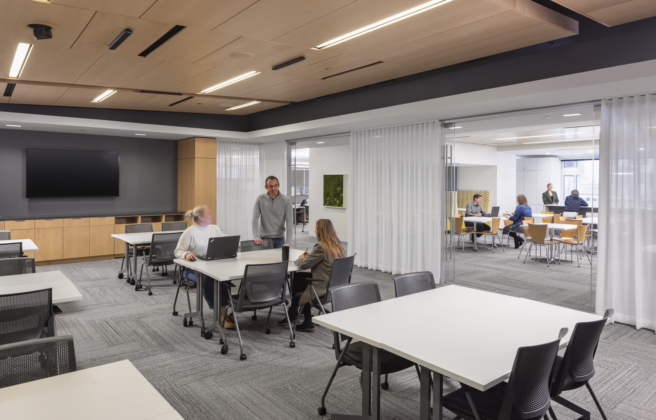In 2014, Northeast Metro Intermediate School District 916 in the northern suburbs of Minneapolis-Saint Paul opened the first known primary school of its kind. Created specifically for children who live with severe autism and emotional-behavioral disorders, Karner Blue Education Center took a dramatically different approach to school design that married the functions of education with elements more akin to behavioral health.
The results have been nothing short of remarkable: a more-than 50-percent increase in the number of students served compared to previous school years, a nearly 30-percent drop in use of restrictive procedures for students who deregulate, and a noticeable increase in time actually focused on teaching rather than behavioral control.
Based on what is working and what has been learned from the non-traditional school design, the school district opened the doors to its second school, Pankalo Education Center, in September for the 2017-18 school year. The school brings an arts-based focus to its compassionate education model with the capacity to serve up to 130 students with complex special needs.
Pankalo – a name created from the Greek words meaning “complete” and “beauty” – is designed around four neighborhood communities, each with five classrooms and a common area. The neighborhoods also include other small rooms like a sensory room that allows a student to refocus their minds and bodies and return to classrooms ready to learn.
It is more than the neighborhoods, though, that make the design of the school different. The key to the success of the educational/behavioral combination design are the layers of interventional spaces for students learning coping skills for self-regulation:
- The common areas provide room for students to pace and move without disruption to the other learning environments inside the classrooms or in other neighborhoods.
- Sensory rooms feature student-chosen LED lighting, music, and sounds designed to calm students and help them self-regulate.
- Shorter hallways control sight lines to obscure exits and discourage students looking for an “escape” from running through the corridors.
- Intervention rooms allow staff to work with students one-on-one in a controlled setting with limited distractions.
In addition to the layers of interventions, lighting and mechanical elements are specifically designed for the needs of students who are highly sensitive to environmental triggers such as noises and air movements caused by artificial lighting and air ducts, respectively. Large, elevated windows and skylights reduce the need for artificial lighting in classrooms and common areas, and a strategically placed mechanical penthouse over non-student spaces mitigates any possible triggers caused by noise and vibrations of mechanical units.
“As a healing learning environment, the strategy is to bring these students into a school that is both therapeutic and academic,” said Hanna Kuehl, CID, LEED AP, project manager at BWBR. “By removing the environmental stressors that can lead to behavioral escalation, students can focus on learning as well as developing coping skills to navigate the world outside of the school.”
Working with state fire inspectors, even fire alarms are specific for this special student population, replacing loud alarms and strobe lights with calm voice alarms and LED reader signs more often found in mental health facilities. Not specific to Pankalo, the fire alarms were one of many successful strategies that carried over from Karner Blue, including soft, movable, child-friendly furniture; rubber flooring and strategically used carpeting; and nesting windows, this time made deeper for students to sit inside.
“We took all the things that were working at Karner Blue and enhanced those elements,” said Steve Berg, AIA, designer on both Karner Blue and Pankalo. “The radical-looking floor plan allows Pankalo to leverage all the innovations established by Karner Blue and improve on the strategy.”
The most notable enhancement may be the amount of windows and daylight entering the facility. Where skylights brought in daylight to interior common areas in each neighborhood at Karner Blue, Pankalo features large windows with child-friendly and playful furniture in each learning community, giving students equal chances to relax and focus on their own or expend energy with other children. Window seats in the hallway also provide a place for students to sit and compose themselves when needed.
“If this was a college or university, there would be outlets for laptops at those sitting areas,” Berg said.
Classrooms are also designed for flexibility in furniture layouts to facilitate a variety of teaching preferences. Teachers can adjust the learning environment based on the needs of the students on any given day and throughout the day to enhance learning activities. As an intermediate school district that only receives students referred by member school districts, the student mix changes regularly. It is also temporary for most of the students, making the flexibility of the classrooms more beneficial.
Taken as a whole, the design elements create layers of intervention and passive seclusion opportunities that help students learn how to manage their bodies and minds through self-awareness and control while avoiding physical interventions with staff. Coupled with a softer, warm atmosphere and elegantly integrated safety features, the healing learning environment allows students with severe autism and emotional-behavioral disorders to discover their potential both as students and as individuals with special needs.
“These schools are giving students room to learn who they are and what they are capable of achieving,” Kuehl said. “With the self-coping skills to manage a stimulating world, these unique students can return to their home schools and community ready to flourish both academically and socially.”

